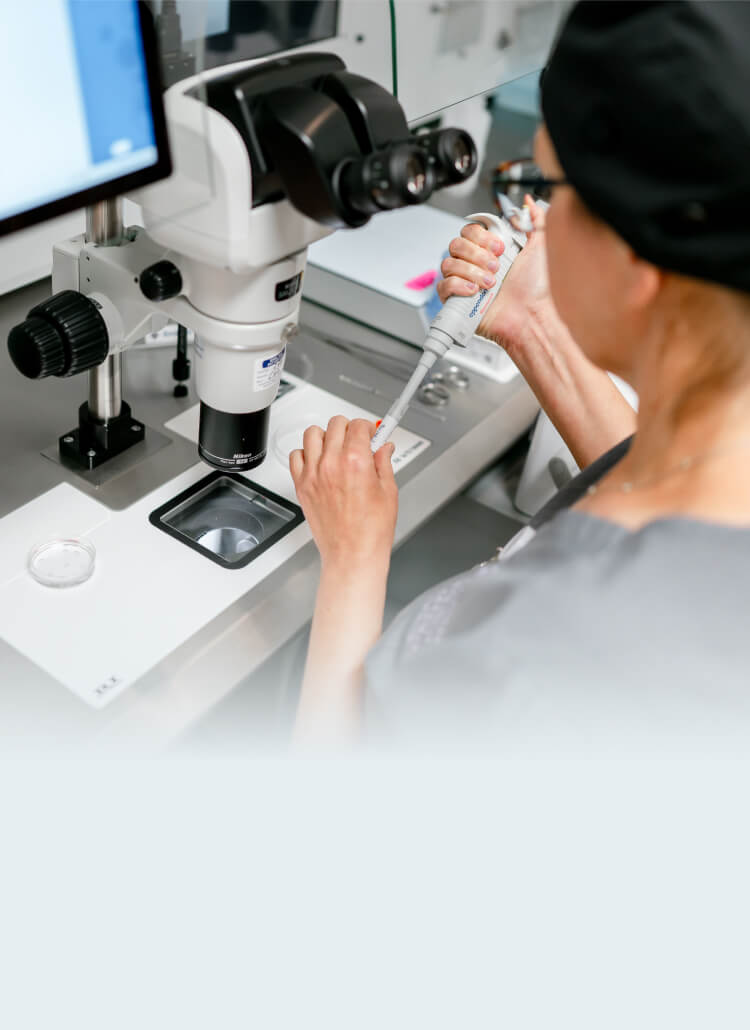Preimplantation Genetic Testing (PGT)
Preimplantation genetic testing (PGT) is a powerful tool used in conjunction with in vitro fertilization (IVF) to increase the chances of a healthy pregnancy. At Advanced Fertility Center of Chicago, we offer PGT to help identify genetic abnormalities in embryos before they are transferred to the uterus. This testing allows for the selection of embryos that are more likely to result in a successful pregnancy, reducing the risk of genetic disorders and increasing the overall success rate of IVF.
What Is Preimplantation Genetic Testing (PGT)?
PGT involves removing a cell from an embryo created through IVF for genetic testing before transferring the embryo to the uterus. There are three distinct types of PGT:
PGT-A for Chromosomal Abnormalities
PGT-A screens embryos for a normal chromosome number. Humans have 23 pairs of chromosomes, for a total of 46. Having an extra or a missing chromosome can cause miscarriage in early pregnancy or a wide range of health issues. One example is Down syndrome which has an extra chromosome number 21. Chromosomal abnormalities are also a leading cause of IVF implantation failure.
PGT-A helps identify these chromosomal abnormalities before embryo transfer, allowing for the selection of embryos with the correct chromosome number. By transferring only chromosomally normal embryos, PGT-A can significantly increase the chances of successful implantation and reduce the risk of miscarriage or genetic disorders, ultimately improving the overall outcomes of IVF treatment.
PGT-M for Single Gene Defects
PGT-M is the testing of embryos for single-gene genetic diseases. These disorders are caused by the inheritance of a defective gene. When one or both partners in a couple are carriers of the genetic mutation that could lead to a serious medical condition in the child, PGT-M can be used to identify and select embryos created through IVF that do not have the disorder. There are over 1,000 single-gene disorders that can identified.
PGT-M allows for the detection of conditions such as cystic fibrosis, sickle cell anemia, Huntington's disease, and many others, depending on the specific mutation being tested. By selecting embryos that are free of the defective gene, PGT-M provides couples with a way to reduce the risk of passing on serious genetic conditions to their children, offering greater peace of mind and the possibility of a healthier pregnancy and child.
PGT-SR for Structural Chromosomal Abnormalities
PGT-SR is a specialized genetic test designed to detect chromosomal structural abnormalities in embryos. These abnormalities, which include translocations, inversions, deletions, and duplications, can cause infertility, recurrent miscarriages, and serious genetic disorders. PGT-SR is particularly beneficial for couples with a history of these issues, as it allows for the selection of embryos with normal chromosomal structures.
PGT-SR can significantly increase the chances of a successful pregnancy and reduce the risk of miscarriage. This testing provides couples with vital information, enabling them to make informed decisions and reducing the likelihood of passing on genetic disorders to their children.
Choose AFCC for Preimplantation Genetic Testing in Chicago
Is PGT right for you? Our team is here to answer all your questions and concerns so that you can move forward with confidence. Contact Advanced Fertility Center of Chicago today for more information about PGT or to schedule a consultation at one of our fertility clinics in Chicago, Downers Grove, Arlington Heights or Gurnee, IL.
Request an Appointment



